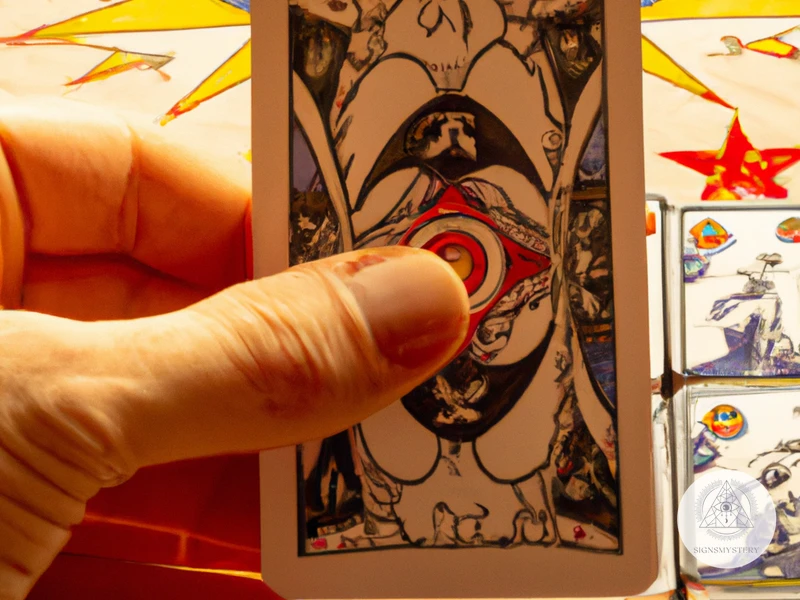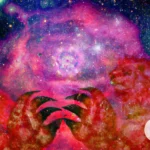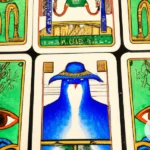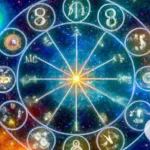There is a mystical and spiritual connection that has long fascinated scholars and seekers alike. It is the connection between tarot and Hermetic philosophy, two ancient traditions that have endured the test of time. These traditions have captured our imaginations and sparked our curiosity with their rich symbolism and hidden meanings. But what is the origin of tarot and Hermetic philosophy, and how do they relate to each other? What is the significance of their symbols and philosophy, and how can they be applied in our daily lives? Join us on a deep dive into the esoteric world of tarot and Hermetic philosophy to discover the answers to these questions and more.
The Origins of Tarot and Hermetic Philosophy
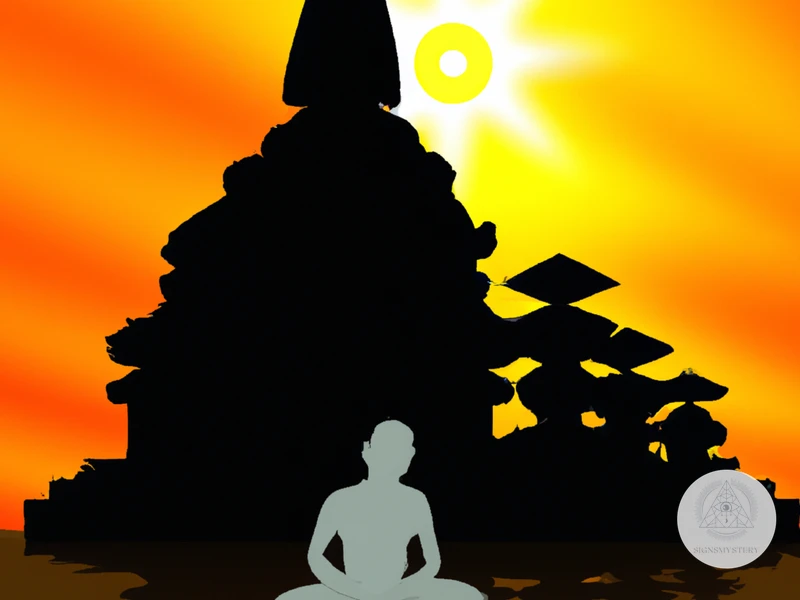
It’s fascinating to explore the origins of Tarot and Hermetic Philosophy and how they both intertwine with each other. Tarot, a divination tool that has captured the imagination of people for centuries, originated in Europe and has a rich history. On the other hand, Hermetic Philosophy, also known as Hermetism or Hermeticism, is an ancient spiritual and philosophical tradition that emerged around the same time as Tarot. The origins of these two seemingly unrelated subjects are shrouded in mystery, but by delving deeper into their history, we can gain a better understanding of their symbolism and philosophy. Let’s explore the emergence of Tarot and Hermetic Philosophy and how they came to be intertwined with each other. (source: /tarot-cards-origin-europe/)
The Emergence of Tarot
Tarot is a powerful tool for divination and spiritual exploration that has been used for centuries. The origins of Tarot are still shrouded in mystery, but it is widely believed that the cards emerged in Europe during the Renaissance period. There are many theories about where Tarot came from, but no one can say for certain.
One theory posits that Tarot was derived from the ancient Egyptian Book of Thoth. Another theory suggests that the cards were brought to Europe by gypsies from the Middle East. Yet another theory proposes that Tarot was invented by Italian aristocrats as a game of chance.
Despite the lack of clear information about its origins, Tarot quickly gained popularity throughout Europe. By the 18th century, Tarot had become firmly established as a tool for divination and spiritual exploration. In the years since, numerous Tarot decks have been created, each with its own unique symbolism and interpretation.
The emergence of Tarot was a significant moment in the history of divination and esoteric practice. While its origins may be a mystery, its enduring popularity is a testament to the power of these mystical cards.
The Birth of Hermetic Philosophy
Hermetic philosophy has its roots in ancient Egypt and Greece, where the concept of the one true divine source was prevalent. However, it was during the Hellenistic period that the principles of Hermeticism began to take shape, thanks to the teachings of the legendary figure, Hermes Trismegistus.
Hermes Trismegistus is a mythical character, a combination of the Greek god Hermes, and the Egyptian god Thoth. According to legends, Hermes Trismegistus was a sage who possessed the knowledge of both the physical and spiritual realms. He was considered the divine source of alchemy, astrology, and magic, and his teachings became the foundation of Hermetic philosophy.
During the Renaissance period, the teachings of Hermes Trismegistus were rediscovered in Europe, leading to a revival of Hermetic philosophy. The writings attributed to Hermes Trismegistus, known as the Hermetic Corpus, included various treatises on astrology, alchemy, and philosophy. These treatises reflected the idea that the universe was a living organism, interconnected and imbued with divine intelligence.
The work of the Hermetic Corpus influenced many scholars, thinkers, and philosophers of the time, including figures such as Giordano Bruno, John Dee, and Isaac Newton. Their contributions to Hermeticism included a greater emphasis on the interconnectedness of all things and the study of correspondences between different realms of existence.
The birth of Hermetic philosophy can be traced back to the teachings of the mythical figure Hermes Trismegistus, and its principles were developed further during the Renaissance period. The rediscovery of the Hermetic Corpus and the works of prominent scholars helped to establish Hermeticism as a philosophical and spiritual tradition that emphasized the interconnectedness of all things.
The Symbolism of Tarot and Hermetic Philosophy
As we delve deeper into the world of Tarot and Hermetic philosophy, it becomes apparent that symbolism plays a crucial role in both practices. The imagery used in Tarot decks and the principles of Hermeticism are steeped in layers of meaning and interpretation. The use of symbols in both Tarot and Hermeticism creates a language within itself, allowing for a greater understanding of the universe and our place within it. In this section, we will explore the symbolism of Tarot and Hermetic philosophy, including the major arcana, the elements, astrology, and the Tree of Life. By examining the imagery and meanings behind these symbols, we can gain insight into their significance and how they relate to our lives.
The Major Arcana
The Major Arcana is a set of 22 cards in the Tarot deck. These cards are considered the most significant and powerful in the deck, symbolizing major life events and spiritual growth. Each card has a specific meaning and is associated with a particular archetype or energy.
The cards are numbered from 0 to 21, with the Fool being 0 and the other cards numbered 1 through 21. Each card also has a name, such as The Magician, The Empress, The Tower, or The Sun. The Major Arcana cards are often used for divination and can provide insight into the spiritual journey of an individual.
The imagery and symbolism used in the Major Arcana is deeply rooted in Hermetic philosophy, as well as other esoteric traditions. Each card represents a particular stage in the journey of the Fool, who is depicted in the first card of the Major Arcana. The Fool represents the individual who is about to embark on a spiritual journey or a new phase of life.
The Major Arcana cards are rich in symbolism and contain many layers of meaning. For example, The High Priestess card represents intuition, mystery, and the subconscious mind. The card features a woman sitting between two pillars, holding a scroll and a veil. The pillars represent duality, while the veil represents the mysteries that are hidden from view. The scroll represents the knowledge that is available to those who seek it.
Similarly, The Tower card represents upheaval, destruction, and sudden change. The card features a tower being struck by lightning, with people falling from it. The card symbolizes the destruction of old patterns and the need to rebuild one’s life from the ground up.
The Major Arcana cards are a powerful tool for spiritual growth and insight. They provide a symbolic representation of the challenges and opportunities that we encounter on our journey through life. For those interested in the history and evolution of Oracle decks, follow this link. Alternatively, for more information on the symbolism of Tarot Oracle, check out this article.
The Four Elements and the Suits
The four elements of earth, air, fire, and water are integral to both Tarot and Hermetic Philosophy. In Tarot, these elements are represented through the suits of the Minor Arcana, which include Wands (fire), Cups (water), Swords (air), and Pentacles (earth).
Wands: Wands are associated with the element of fire, and represent creativity, inspiration, and passion. They can also symbolize the journey of the spirit and the desire for transformation. Tarot decks like the Rider-Waite and Crowley-Harris Thoth decks feature Wands in their imagery.
Cups: Cups represent the element of water, and are associated with emotion, intuition, and the subconscious. They can also symbolize love, relationships, and spiritual connections. Many Tarot decks like the Mythic Tarot and the Golden Tarot feature Cups in their imagery.
Swords: The element of air is represented by Swords in Tarot, and can symbolize the mind, logic, and intellect. They can also represent conflict, struggle, and the ability to make decisions. Tarot decks like the Visconti-Sforza and the Marseille Tarot feature Swords in their imagery.
Pentacles: Earth is represented by Pentacles, which symbolize material possessions, money, and practical matters. They can also represent the physical body and the connection to the earth. Many Tarot decks like the Robin Wood Tarot and the Wildwood Tarot feature Pentacles in their imagery.
Each of these elements and suits can provide insight into different aspects of life and spirituality. Understanding the symbolism behind them can enhance the interpretation of a Tarot reading and help connect with the energy of the universe.
Sources:
Famous Tarot Card Decks and Their Creators,
The History of Tarot in Medieval Europe,
The History and Evolution of Oracle Decks,
The Rise of Oracle Cards: A New Way to Connect with Divination,
Tarot Cards in Pop Culture: From TV to Fashion
The Role of Astrology
Astrology plays a significant role in both Tarot and Hermetic Philosophy. It is believed that the position of celestial bodies at the time of a person’s birth can have a profound effect on their personality, actions, and future.
The presence of astrological symbolism in Tarot is undeniable. Each card in the Major Arcana is associated with a zodiac sign or a planet, such as The Tower card being linked to Mars, the planet of war and conflict. The Four Elements also have astrological associations, with Fire being linked to Aries, Leo, and Sagittarius, while Water is linked to Cancer, Scorpio, and Pisces.
Hermetic Philosophy also places great importance on the study of astrology. The belief is that the movements and positions of the stars and planets can reveal hidden knowledge about the nature of the universe and ourselves. This knowledge can be used to gain a deeper understanding of our place in the world and to facilitate spiritual growth.
In Hermeticism, there is a concept known as the “As Above, So Below” principle, which recognizes the interconnectedness of all things in the universe. Astrology is seen as a tool for understanding these connections and for gaining insight into the workings of the universe.
Astrology serves as a means of unlocking hidden knowledge and tapping into the universal energies that shape our lives. Its inclusion in both Tarot and Hermetic Philosophy underscores the importance of the stars and planets in the quest for spiritual enlightenment.
The Tree of Life
The Tree of Life is a central concept in both Tarot and Hermetic Philosophy. It is a visual representation of the universe and its various components, from the physical world to the spiritual realm.
The symbolism of the Tree is complex and multi-layered. On the surface, it represents the interconnectedness of all things in the universe. Each “branch” symbolizes a different aspect of existence, from the material world at the bottom to the divine realm at the top.
However, the Tree also represents a blueprint for spiritual growth and ascension. Through the process of “climbing” the Tree, one can move from a state of ignorance and darkness to one of knowledge and enlightenment.
The Tree is composed of ten spheres called the Sephiroth. Each Sephirah represents a different aspect of the universe, as well as a different stage in spiritual growth. The Sephiroth are arranged in a particular order, with the lowest sphere, Malkuth, representing the material world and the highest, Kether, representing the divine.
There are also 22 paths that connect the Sephiroth. Each path represents a different aspect of the spiritual journey, such as discipline, self-awareness, and surrender. These paths are often associated with the Major Arcana cards in the Tarot.
The Tree of Life also incorporates the four elements and the astrological signs. These correspondences further deepen the symbolism and allow for a more nuanced understanding of the universe and its workings.
| Sephirah | Association | Astrological Sign | Element |
|---|---|---|---|
| Malkuth | Material World | Earth | Earth |
| Yesod | Subconscious Mind | Moon | Water |
| Hod | Intellect | Mercury | Air |
| Netzach | Emotions | Venus | Water |
| Tiphereth | Balance and Harmony | Sun | Air |
| Geburah | Judgment and Justice | Mars | Fire |
| Chesed | Mercy and Compassion | Jupiter | Water |
| Binah | Understanding | Saturn | Earth |
| Chokmah | Wisdom | Uranus | Air |
| Kether | Unity with the Divine | Neptune | Fire |
The Tree of Life is a powerful symbol that incorporates various aspects of the universe and the spiritual journey. It offers a roadmap for spiritual growth and allows for a deeper understanding of the interconnectedness of all things. Its use in both Tarot and Hermetic Philosophy highlights their shared roots and the importance of symbolism in these practices.
The Philosophy of Tarot and Hermeticism
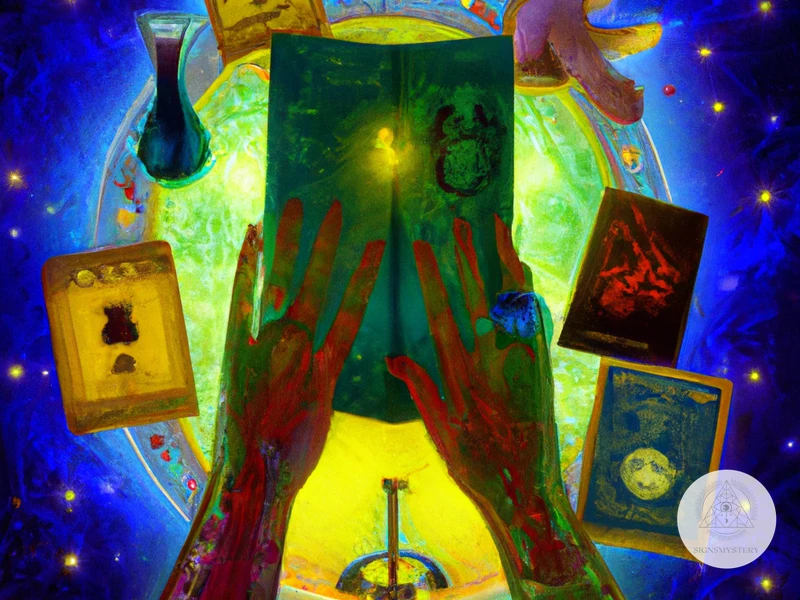
As we delve deeper into the mystic and spiritual world of Tarot and Hermeticism, we cannot overlook the underlying philosophy that guides and informs these practices. Studying the philosophy of Tarot and Hermeticism will open up new pathways to understanding the symbolism and correspondences used in divination and magical practices. Throughout history, Hermetic philosophy has been instrumental in shaping the esoteric traditions of the Western world. It emphasizes spiritual growth, the attainment of knowledge, and the ultimate goal of achieving unity with the divine. In this section, we will explore some of the key concepts of Tarot and Hermetic philosophy and how they inform the practice of divination and magic.
The Importance of Symbolism and Correspondences
In Tarot and Hermetic Philosophy, symbolism and correspondences play a crucial role in understanding the deeper meanings and connections between the different elements and concepts.
Symbolism refers to the use of symbols or images to represent something beyond their literal meaning. In Tarot, each card is rich in symbolism, from the colors and figures to the objects and landscapes depicted. For example, The Fool card often features a figure with a knapsack and a dog, which represents the beginning of a journey and the guidance and protection provided by intuition. Understanding the symbolism in each card can provide insights into the meanings of a reading and the larger concepts they represent.
Correspondences are the connections between different aspects of the universe, such as colors, elements, planets, and tarot cards. By understanding these connections, practitioners of Tarot and Hermetic Philosophy can deepen their understanding of the universe and its workings. In Tarot, correspondences are often organized into tables, such as the Four Elements and the Suits table shown below:
| Four Elements | Suits |
|---|---|
| Fire | Wands |
| Water | Cups |
| Earth | Pentacles |
| Air | Swords |
This table shows the correspondences between the four elements (Fire, Water, Earth, and Air) and the suits in Tarot (Wands, Cups, Pentacles, and Swords). These correspondences allow practitioners to deepen their understanding of the cards and their meanings, as well as incorporating the correspondences into their practices and rituals.
The importance of symbolism and correspondences in Tarot and Hermetic Philosophy cannot be overstated. They provide a framework for understanding and interpreting the complex concepts and ideas presented by these practices, and allow practitioners to deepen their understanding of the universe and its workings. By studying and meditating on the symbolism and correspondences, individuals can gain insights into their own lives and spiritual paths, leading to greater self-awareness and personal growth.
The Concept of As Above, So Below
The concept of “As Above, So Below” is a central tenet of Hermetic philosophy and is closely intertwined with the symbolism of tarot. This phrase is often used to describe the fundamental principle of correspondence between the microcosm and the macrocosm. In other words, the same patterns, structures, and principles that exist in the universe on a grand scale can also be found in the human experience on a smaller scale.
This concept is represented in the tarot through the use of symbols and imagery that reflect the interconnectedness of all things. The cards often depict images of celestial bodies, such as the sun and the moon, as well as earthly elements, such as trees and animals. These symbols are used to illustrate the idea that everything on earth is connected to the wider universe.
Here are some examples of how the concept of “As Above, So Below” is portrayed in tarot:
- In the Major Arcana card of The Magician, the figure stands with one hand pointing towards the sky and one hand pointing towards the earth, representing the connection between the spiritual and physical worlds.
- The card of The World depicts a naked figure surrounded by a wreath, symbolizing the unification of earthly and celestial energies.
- The Four Elements – earth, air, fire, and water – are often represented in the tarot as symbols of the fundamental building blocks of both the universe and human life.
The concept of “As Above, So Below” has many important implications within Hermetic philosophy and tarot:
- It suggests that there is a hidden order and meaning in the universe, which can be uncovered through the study of symbols and correspondences.
- It highlights the notion that humans are not separate from the natural world, but are instead an integral part of it.
- It encourages individuals to look within themselves to discover the same patterns and structures that exist in the wider universe, offering a path towards self-discovery and spiritual growth.
The concept of “As Above, So Below” is a powerful and deeply mystical idea that has inspired spiritual seekers and tarot readers for centuries. By embracing this principle of correspondence, individuals can learn to see the interconnectedness of all things and gain a deeper understanding of their place in the universe.
The Seven Hermetic Principles
The Seven Hermetic Principles are fundamental concepts that form the basis of Hermeticism and are also strongly reflected in the symbolism of Tarot. These principles are often associated with the ancient Egyptian god Thoth, who is revered as the god of wisdom, writing, and magick in Egyptian mythology. The Seven Hermetic Principles are as follows:
| The Principle | Description |
|---|---|
| The Principle of Mentalism | This principle emphasizes the idea that everything in the universe, including the physical world, is a mental construct. It suggests that the universe is a product of the mind or consciousness. |
| The Principle of Correspondence | This principle emphasizes the idea of “as above, so below” and suggests that there is a correspondence between the physical and spiritual planes of existence. It implies that everything in the universe is connected and that the microcosm reflects the macrocosm. |
| The Principle of Vibration | This principle suggests that everything in the universe is made up of vibrations that are constantly in motion. It implies that everything vibrates at different frequencies and that these vibrations can affect each other. |
| The Principle of Polarity | This principle suggests that everything in the universe has an opposite or complementary aspect. It implies that everything has two sides and that these sides are necessary for each other to exist. It encourages balance and harmony. |
| The Principle of Rhythm | This principle emphasizes the idea that everything in the universe moves in cycles or patterns. It suggests that everything has a natural ebb and flow and that these rhythms can be understood and utilized. |
| The Principle of Cause and Effect | This principle suggests that everything in the universe has a cause and effect relationship. It implies that every action has a reaction and that every effect has a cause. It encourages responsibility and accountability. |
| The Principle of Gender | This principle emphasizes the idea that everything in the universe has a masculine and feminine aspect. It suggests that these aspects are necessary for each other to exist and that they are present in everything, including animals, plants, and minerals. |
These principles are essential for understanding the mystical and spiritual world of Tarot and Hermeticism. They encourage
Subscribe to Our Newsletter
Sign up to receive the latest news and updates.
The Connection between Tarot and Hermeticism
As we delve deeper into the esoteric world of Tarot and Hermetic Philosophy, it becomes clear that the two are intimately intertwined. The symbolism and correspondences within the Tarot align with the principles and teachings of Hermeticism. This deep connection has been recognized by occultists and mystics for centuries, as they have used Tarot as a tool for spiritual growth and understanding within Hermetic practices. Let’s explore this profound connection and discover how Tarot and Hermeticism are inextricably linked.
The Influence of Hermetic Philosophy on Tarot
The influence of Hermetic Philosophy on Tarot can be seen in various aspects of the tarot system. Here are some of the ways in which Hermetic Philosophy has impacted Tarot:
- The Use of Symbolism: Hermetic Philosophy places a great emphasis on the use of symbols and correspondences to convey deeper meanings. This is also evident in Tarot, where each card is rich in symbolism and can be interpreted on multiple levels.
- The Concept of Unity: The Hermetic concept of unity, which posits that everything in the universe is interconnected and part of a single whole, is reflected in the tarot’s interconnectedness between the cards. Each card contains elements of the others, creating a holistic system.
- The Role of Astrology: Astrology has been an important part of Hermetic Philosophy since ancient times. In Tarot, this influence can be seen in the association between the cards and the zodiacal signs.
- The Tree of Life: The Hermetic concept of the Tree of Life, which represents the journey of the soul through different levels of consciousness, is reflected in the structure of the Tarot. The Major Arcana cards, which represent the soul’s journey, are arranged in a way that follows the path of the Tree of Life.
- The Four Elements and the Suits: The Hermetic concept of the four elements (earth, air, fire, and water) is reflected in the tarot’s four suits (pentacles, swords, wands, and cups) which represent different aspects of life and consciousness.
The influence of Hermetic philosophy on Tarot highlights the deep spiritual and mystical roots of this system. By exploring these connections, we can gain a greater understanding of both Tarot and Hermetic Philosophy and their relevance to our lives.
The Role of Tarot in Hermetic Rituals and Practices
Tarot plays a significant role in various Hermetic rituals and practices. The use of tarot in divination is one of the most common practices in Hermeticism and can provide valuable insights into an individual’s spiritual journey. The cards serve as a tool for self-understanding and personal growth. Each card holds a symbolic meaning and can be interpreted differently depending on the situation or question being asked.
One of the most well-known Hermetic rituals that utilizes tarot is the Opening of the Key. This ritual involves a detailed spread of the tarot cards, which is used to gain insight and knowledge about a particular situation, event or individual. The spread is designed to provide a comprehensive understanding of the issue at hand and offers guidance on how to proceed.
Another popular Hermetic practice is the Pathworking. This involves meditation and visualization techniques that use the imagery of the tarot cards to explore different aspects of the self and the universe. The tarot cards are used as gateways into different realms of consciousness and can aid in spiritual development and self-discovery.
Tarot is also used in Hermetic magical practices such as talisman creation, spell casting, and astral projection. The symbolism of the cards is used to create potent visualizations and to support the practitioner’s intent. Tarot cards can also be used as focal points in meditation and ritual work.
It’s important to note that tarot is just one aspect of Hermeticism and should not be used in isolation. When used in conjunction with other Hermetic practices, such as alchemy, astrology, and meditation, tarot can be a powerful tool for spiritual growth and transformation. The connection between tarot and Hermetic philosophy highlights the importance of interconnectedness and the unity of all things in the universe.
The role of tarot in Hermetic rituals and practices is multifaceted and serves as a tool for self-understanding, personal growth, and spiritual development. Through tarot, individuals can explore the mysteries of the universe and gain insight into their own spiritual journey.
The Benefits of Studying Tarot and Hermetic Philosophy
As we come to the end of our deep dive into the mystical world of tarot and Hermetic philosophy, one question remains: what are the practical benefits of studying these ancient traditions? The answer, like the tarot cards themselves, is multi-faceted and layered. From developing intuition and spiritual growth, to gaining practical insights for daily life, the study of tarot and Hermeticism has much to offer those who are willing to dive deep into the mysteries. In this section, we’ll explore some of the specific benefits that can be gained from engaging with these powerful teachings. So grab your deck and let’s explore the transformative power of tarot and Hermetic philosophy together.
The Development of Intuition and Spiritual Growth
Developing intuition and spiritual growth are some of the most significant benefits of studying Tarot and Hermetic Philosophy. By studying Tarot, a person can tap into their unconscious mind, which is an excellent way to develop their intuition. This process can lead to remarkable insights into one’s life and the world around them.
The benefits of developing intuition
1. Improved decision-making: Developing intuition helps one make better decisions as they learn to trust their inner voice, known as the “gut feeling.” One can make sound decisions based on their inner voice, which is often more accurate than making decisions based on logic alone.
2. Increased self-awareness: By tapping into one’s unconscious mind, studying Tarot can help one gain insight into their emotions and thought processes. It allows one to develop a deeper understanding of themselves, which can foster personal growth.
3. Better relationships: Intuition can also help in developing better relationships. When one becomes more intuitive, they can sense the needs of others and respond accordingly, fostering better communication and relationships.
Spiritual Growth
Studying Tarot and Hermetic Philosophy can lead one on a path of spiritual growth. It can help one connect with their higher self, leading to a greater understanding of their purpose in life.
1. Increased mindfulness: Studying these subjects can help one become more mindful, living in the present moment, and connecting with their intuition. This mindful way of living can lead to peace of mind, lower stress levels, and increased happiness.
2. Connection with the divine: By studying Tarot and Hermetic Philosophy, one can develop a deeper understanding of spirituality and the divine. It can lead to a more profound connection with the universe and one’s understanding of it.
3. Conscious evolution: Finally, studying these subjects can lead to conscious evolution, where one continuously works towards personal growth and development. It’s an important step towards a more fulfilling and purposeful life.
Developing intuition and spiritual growth are vital benefits of studying Tarot and Hermetic Philosophy. It leads to a more profound understanding of oneself and the world around. The journey towards spiritual enlightenment is an ever-evolving process that continues throughout one’s life.
The Practical Applications in Daily Life
Tarot and Hermetic philosophy may seem esoteric and mystical, but their practical applications in daily life are numerous and accessible to anyone who seeks to deepen their understanding and connection to the world around them. Below are some examples of how tarot and Hermetic philosophy can be applied in practical ways:
- Self-reflection and introspection: Tarot readings can serve as a powerful tool for self-reflection and introspection. By engaging with the archetypal symbolism of the cards, we can gain insights into our own patterns of thought, behavior, and emotion. This can help us identify areas of our lives where we may be struggling or where we have room for growth.
- Decision-making: Tarot can also be used as a tool for decision-making. By using the cards to explore the possible outcomes of a decision, we can gain clarity and perspective on the choices we face. This can help us make decisions that align with our values and aspirations.
- Meditation and mindfulness: The archetypal symbolism of tarot can also be used as a focus for meditation and mindfulness practices. By meditating on a specific card or theme, we can deepen our understanding of ourselves and the world around us.
- Connecting with others: By studying tarot and Hermetic philosophy, we can gain insights into the perspectives and experiences of others. This can help us cultivate empathy and compassion, and form deeper connections with the people in our lives.
- Empowerment and self-care: Tarot and Hermetic philosophy can also be used as tools for empowerment and self-care. By understanding the symbolism and principles of these traditions, we can develop a greater sense of agency and purpose in our lives. This can help us navigate challenging situations and care for ourselves in healthy and sustainable ways.
The practical applications of tarot and Hermetic philosophy are countless and varied. By engaging with these traditions, we can deepen our connection to ourselves, others, and the world around us, and live more fulfilling and meaningful lives.
Conclusion
As the deep dive into the mystical and spiritual world of Tarot and Hermetic Philosophy comes to a close, one thing is abundantly clear – these two practices are intricately connected and hold profound significance for those seeking spiritual growth and understanding.
Through the exploration of the origins, symbolism, and philosophy of Tarot and Hermeticism, it becomes apparent that they share a common thread – the importance of symbolism and correspondences, the concept of “as above, so below,” and the focus on spiritual evolution and enlightenment.
Studying Tarot and Hermetic Philosophy not only allows for the development of intuition and spiritual growth but also has practical applications in daily life. Through the application of the Seven Hermetic Principles, individuals can lead a more fulfilling and purposeful existence.
While the connection between Tarot and Hermeticism may not be immediately apparent, delving deeper into their histories and practices reveals a profound interconnectedness that is both enlightening and empowering.
In conclusion, the study of Tarot and Hermetic Philosophy offers a path to spiritual enlightenment and personal growth. By incorporating the principles and practices into daily life, individuals can lead a more purposeful and fulfilling existence. The connection between Tarot and Hermeticism serves as a reminder of the interconnectivity of all things and the potential for growth and understanding within the mystical and spiritual realm.
Frequently Asked Questions
What is the history behind the creation of Tarot?
The exact history and origin of Tarot is unclear, but it is believed to have originated in Italy during the 15th century as a popular card game. It wasn’t until later that it became associated with divination and spirituality.
What is Hermetic philosophy?
Hermetic philosophy is a set of teachings and beliefs that originated in ancient Egypt and Greece, and was later developed in the writings of Hermes Trismegistus. It focuses on the nature of reality and the relationship between the physical and spiritual worlds.
What is the importance of symbolism in Tarot and Hermetic philosophy?
Symbolism is essential in both Tarot and Hermetic philosophy as it helps to convey complex and abstract concepts in a more tangible and relatable way. The use of symbols also allows for deeper levels of interpretation and understanding.
What is the role of astrology in Tarot and Hermetic philosophy?
Astrology is often used in both Tarot and Hermetic philosophy as a tool for understanding the connection between the natural world and the spiritual realm. The positions of the planets and other celestial bodies are believed to have a direct influence on human behavior and the events of the world.
What is the significance of the Four Elements in Tarot and Hermeticism?
The Four Elements (water, air, fire, and earth) are important symbols in both Tarot and Hermetic philosophy as they represent the fundamental building blocks of the physical world and the spiritual realm. They are also associated with different aspects of human experience, such as emotions, thoughts, creativity, and material possessions.
How does Tarot relate to the Tree of Life?
The Tree of Life is a central concept in Hermetic philosophy and is often used as a framework for understanding the relationship between different aspects of reality. In Tarot, the Tree of Life is represented by the ten spheres, or Sephiroth, and is associated with different cards and their meanings.
What are the Seven Hermetic Principles?
The Seven Hermetic Principles are a set of guiding principles that underpin Hermetic philosophy. They include the principles of mentalism, correspondence, vibration, polarity, rhythm, cause and effect, and gender. These principles are believed to explain the nature of reality and the workings of the universe.
What is the connection between Tarot and Hermeticism?
Tarot and Hermeticism share many similarities in terms of their use of symbolism, their focus on spiritual growth and understanding, and their belief in the interconnectedness of all things. Many of the symbols and concepts in Tarot have their roots in Hermetic philosophy, and the two practices are often used together in spiritual and mystical rituals.
What are the benefits of studying Tarot and Hermetic philosophy?
Studying Tarot and Hermetic philosophy can lead to greater clarity and understanding of ourselves and the world around us. It can also help to deepen our spiritual practice, develop our intuition, and provide us with practical tools for self-improvement and personal growth.
How can we apply the teachings of Tarot and Hermetic philosophy to our daily lives?
The principles and teachings of Tarot and Hermetic philosophy can be applied to many areas of our lives, including relationships, career, and personal development. By integrating these teachings into our daily lives, we can develop greater self-awareness and gain a deeper understanding of ourselves and our place in the world.

